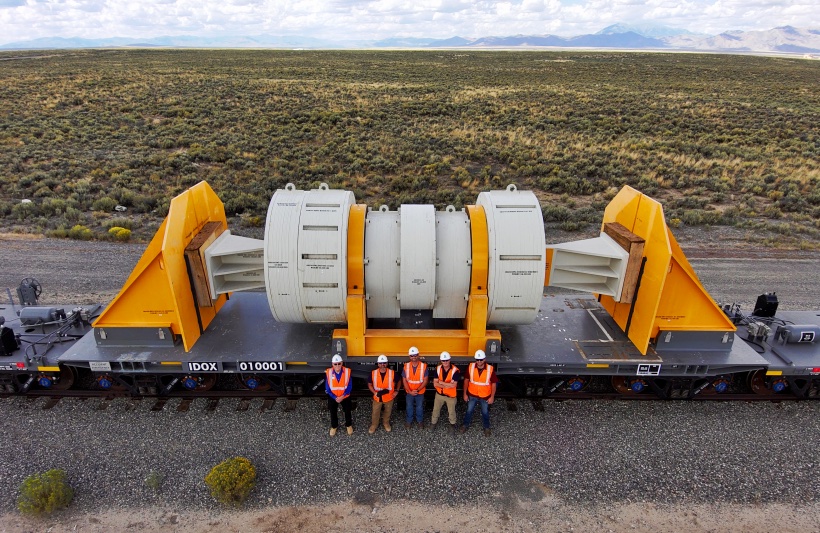Atlas-railcar-DOE.jpg

The U.S. Department of Energy (DoE) developed the Atlas railcar to transport spent nuclear fuel and high-level radioactive waste. It has been certified by the Association of American Railroads (AAR) to operate on all major freight railroads in the U.S.
The DoE mentioned that the certification was the highest safety standard set by the AAR for transporting high-level radioactive materials.
The 12-axle Atlas railcar comes equipped with high-tech sensors and monitoring systems. It was designed to safely and securely transport shipments of commercial spent nuclear fuel weighing up to two hundred and eighteen tons. The DoE said that the Atlas project took ten years to complete and cost about thirty-three million dollars.
The entire railcar system consists of the Atlas railcar, two buffer railcars and a rail escort vehicle that was developed in partnership with the Naval Nuclear Propulsion Program.
Final testing of the railcars was accomplished by the completion of a one thousand six-hundred-and-eighty-mile round-trip journey from Pueblo, Colorado, to Scoville, Idaho. The Atlas railcars are the first DoE railcars to meet the rigorous testing requirements of AAR's S-2043 standard for transporting high-level radioactive materials.
Paul Murray is the DoE Deputy Assistant Secretary for Spent Fuel and High-Level Waste Disposition. He said, “The certification of the Atlas railcar by the AAR is a significant step forward as we develop the infrastructure to safely manage and store the nation's nuclear waste. The capability for DOE to safely and securely transport spent nuclear fuel is a key component of DOE's vision for an integrated waste management system that includes transportation, and government-owned storage and permanent disposal identified through a consent-based siting process.”
The Atlas is one of two railcars DoE is developing to provide flexibility in transporting spent nuclear fuel and high-level radioactive waste to future federal interim storage facilities and disposal sites.
The eight-axle Fortis railcar is designed to carry lighter loads. It is expected to begin single car testing no sooner than 2025 and could be operational before 2030.
The management of civilian spent nuclear fuel in the U.S. is a federal responsibility. The planned permanent repository at Yucca Mountain in Nevada was designated in 1987 as the sole initial repository for seventy thousand tons of high-level wastes. However, the project was canceled before construction began. This means that spent nuclear fuel from more than 70 shutdown, decommissioned and operating nuclear energy facilities is currently in storage at sites across the U.S.
Subject to appropriations, DoE is proceeding on a government-owned consolidated interim storage facility project that includes rail transportation. Commercial spent nuclear fuel is packaged in containers weighing between eighty and two hundred and ten tons. This is beyond legal weight limits for truck transport in the U.S. Rail is the preferred mode to move these heavy containers.
DoE intends to eventually transport more than one hundred and forty ton of commercial spent nuclear fuel that it is estimated will have been generated in the U.S. by 2060.
The location of the consolidated interim storage facility will be selected through DoE's consent-based siting process. This puts communities at the forefront and would ultimately reduce the number of locations where commercial spent nuclear fuel is stored in the USA.
Construction and operation of the interim storage facility will require amendments to the Nuclear Waste Policy Act to move this project forward.